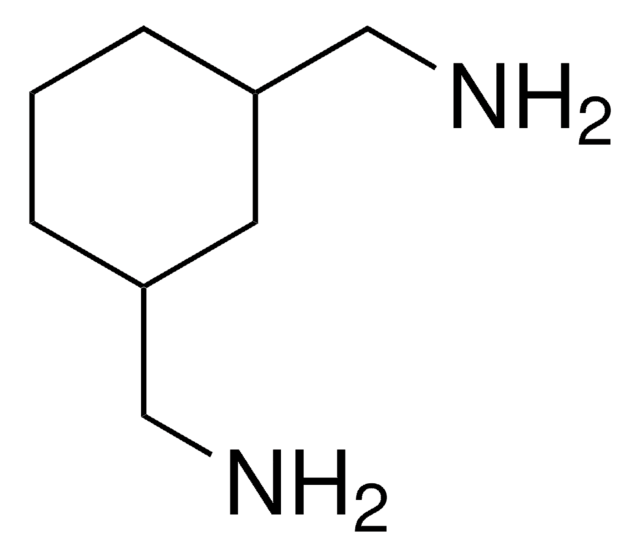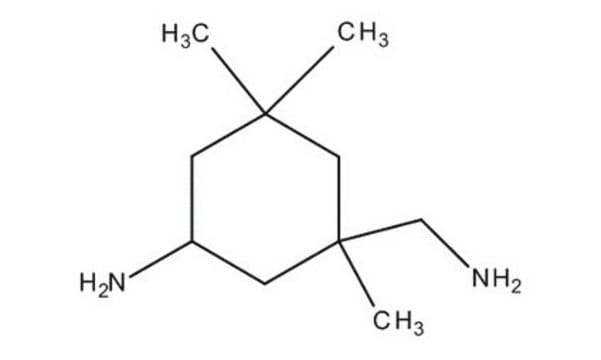369500
4,4′-Methylenebis(2-methylcyclohexylamine), mixture of isomers
99%
동의어(들):
2,2′-Dimethyl-4,4′-methylenebis(cyclohexylamine), 3,3′-Dimethyl-4,4′-diaminodicyclohexylmethane, 4,4′-Diamino-3,3′-dimethyldicyclohexylmethane, Bis(3-methyl-4-aminocyclohexyl)methane, DMDC, Dimethyldicykan
About This Item
추천 제품
분석
99%
형태
liquid
refractive index
n20/D 1.499 (lit.)
bp
93-100 °C (lit.)
density
0.94 g/mL at 25 °C (lit.)
SMILES string
CC1CC(CCC1N)CC2CCC(N)C(C)C2
InChI
1S/C15H30N2/c1-10-7-12(3-5-14(10)16)9-13-4-6-15(17)11(2)8-13/h10-15H,3-9,16-17H2,1-2H3
InChI key
IGSBHTZEJMPDSZ-UHFFFAOYSA-N
유사한 제품을 찾으십니까? 방문 제품 비교 안내
일반 설명
애플리케이션
- in the synthesis of fully aliphatic polyimides
- in the synthesis of fully aliphatic polyimide-siloxanes (APISiO)
- to prepare epoxy resin with trimethylolpropane triglycidyl ether, used for the characterization of the structural organization in dragline silk by transmission X-ray microscopy (STXM).
신호어
Danger
유해 및 위험 성명서
Hazard Classifications
Acute Tox. 2 Inhalation - Acute Tox. 3 Dermal - Acute Tox. 4 Oral - Aquatic Chronic 2 - Skin Corr. 1A
Storage Class Code
6.1A - Combustible acute toxic Cat. 1 and 2 / very toxic hazardous materials
WGK
WGK 3
Flash Point (°F)
343.4 °F - closed cup
Flash Point (°C)
173 °C - closed cup
개인 보호 장비
Faceshields, Gloves, Goggles, type ABEK (EN14387) respirator filter
시험 성적서(COA)
제품의 로트/배치 번호를 입력하여 시험 성적서(COA)을 검색하십시오. 로트 및 배치 번호는 제품 라벨에 있는 ‘로트’ 또는 ‘배치’라는 용어 뒤에서 찾을 수 있습니다.
이미 열람한 고객
자사의 과학자팀은 생명 과학, 재료 과학, 화학 합성, 크로마토그래피, 분석 및 기타 많은 영역을 포함한 모든 과학 분야에 경험이 있습니다..
고객지원팀으로 연락바랍니다.














![Trimethylolpropane tris[poly(propylene glycol), amine terminated] ether average Mn 440](/deepweb/assets/sigmaaldrich/product/structures/186/658/1b1d510a-705a-4bfd-b90a-9dec80d64467/640/1b1d510a-705a-4bfd-b90a-9dec80d64467.png)